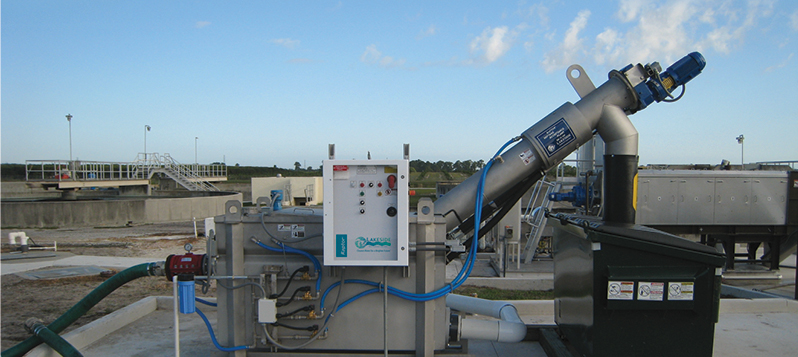According to the Environmental Protection Agency (EPA), wastewater treatment is one of the most common forms of pollution control in the U.S. Lakeside Equipment Corporation is proud to supply equipment and systems that are used across the country at wastewater treatment plants, which are facilities that clean wastewater before discharging it back into the environment.
The Need For Wastewater Treatment Plants: Then and Now
Wastewater treatment plants were not always necessary. In the past, bacteria and other organisms found in waterways would break down sewage into harmless byproducts in a naturally occurring purification process. But, the bacteria and other organisms could not keep up with the increase in population and production of sewage. Wastewater is now sent to wastewater treatment plants—many of which use the same purification process found in nature to clean water.
Most wastewater treatment plants prepare wastewater for reuse in two separate stages: the primary and secondary stage.
The Primary Stage of Wastewater Treatment
Sewage enters the primary stage of treatment as soon as it arrives at a wastewater treatment facility. First, it is sent through a screen that is designed to remove large pieces of debris that could damage Lakeside equipment used elsewhere in the facility. Some facilities have multiple screens in place to remove objects and materials of different sizes from the sewage.
After passing through the screen, the sewage water moves into the grit chamber. Grit can include sand, gravel, eggshells, or any other type of solid material that makes it through the screening process. There are several different types of grit chambers, but Lakeside’s aerated grit chamber is among the most popular. The wastewater flows in a spiral pattern inside this chamber. Air is slowly introduced into one side of the chamber, creating a perpendicular pattern that separates heavier materials from the rest of the water. The heavier materials, or grit, then sink to the bottom of the chamber.
Even though the wastewater has been through screens and a grit chamber, it still contains other materials that need to be removed. The wastewater slowly flows through a sedimentation tank, and as it flows, the solids that remain in the water start to drift towards the bottom of the tank.
This is the final step in the primary stage of the wastewater treatment process. At this point, the majority of the solids have been removed from the water. But, the water is still not clean enough to be released back into the environment, so it enters the secondary stage so it can be purified even further.
The Secondary Stage of Wastewater Treatment
The secondary stage of the treatment process is designed to remove up to 85% of organic matter that remains in the wastewater. There are a number of different ways to achieve this goal, but many facilities use either the trickling filter or activated sludge process.
If the facility uses the trickling filter method, the wastewater is pumped into an area that contains between three to six feet of stones after leaving the sedimentation tank. Bacteria and other small organisms grow on these stones, so they consume or break down the organic matter in the water as it flows through the tank. The water is then removed from the trickling filter through pipes and sent back to a sedimentation tank for yet another round of purification.
Most facilities use the activated sludge process, which takes place immediately following the sedimentation tank in the primary stage of treatment. The wastewater enters an aeration tank, where it is mixed with sludge. Air is then pumped into the aeration tank to facilitate the growth of bacteria and other small organisms within the sludge. The bacteria and other microorganisms break down the organic matter in the water into harmless byproducts. The wastewater will remain in the aeration tank for between three to six hours, which gives the bacteria and microorganisms plenty of time to break down all of the remaining organic material. After leaving the aeration tank, the wastewater is usually sent to another sedimentation tank to separate the solids from the water.
Regardless of which method is used, the wastewater will go through one more round of treatment before it is released back into the environment. After the water leaves the sedimentation tank in the secondary stage of the treatment process, it is sent into tanks where it is exposed to chlorine. Wastewater typically spends between 15-20 minutes inside these tanks with chlorine. This chemical kills the harmful bacteria that could be lurking in the water, and it also gets rid of the unpleasant smell of wastewater. Wastewater treatment plants can kill up to 99% of bacteria in water with chlorine, so this is an important step in the process.
Some facilities do not use chlorine to kill bacteria in the final stage of the treatment process. Instead, these facilities use alternatives such as ultraviolet (UV) light or ozone to kill bacteria in the water before releasing it to the environment. These alternatives do not involve the use of chemicals, so they are considered safer for the environment and wildlife.
After the water is sent through this final stage, it is released into waterways in the community. The final stage ensures that the vast majority of bacteria in the water is killed so it will not harm humans, animals, or the environment once it has been discharged.
Treating wastewater is a complex process that involves the use of high-tech and reliable equipment. Lakeside is proud to supply the equipment and purification systems that wastewater treatment plants need to filter, clean, and disinfect water before it is sent back into local waterways. If you are interested in purchasing Lakeside equipment or systems, speak to one of our representatives today by calling 630-837-5640.








